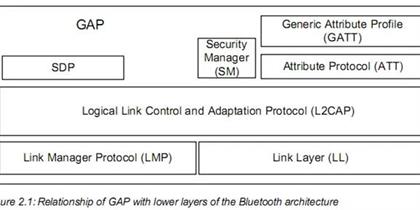
BLE Beacons and Gateways: The Dynamic Duo of IoT Connectivity
September 22, 2024

In the intricate world of wireless communication, Bluetooth Low Energy beacons (BLE Beacons) play a pivotal role, particularly when it comes to connecting with gateways. These small yet powerful devices use the BLE protocol to transmit data, which can then be received and processed by a BLE gateway. The interaction between BLE beacons and gateways is a critical aspect of many IoT applications, including asset tracking, indoor navigation, and proximity marketing.
The Role of BLE Beacons
BLE beacons are compact devices that continuously broadcast signals using Bluetooth Low Energy technology. They are designed to be low power, with the ability to run on small batteries for extended periods. Beacons are often used to transmit identifiers, which can be picked up by nearby devices such as smartphones or dedicated BLE gateways.
Connecting with a Gateway
When a BLE beacon comes within range of a gateway, the gateway’s receiver picks up the beacon’s signal. The gateway is essentially a bridge that translates the beacon’s Bluetooth signal into a format that can be understood by other systems, such as a cloud server or a local network. This allows the data from the beacon to be logged, analyzed, and used to trigger actions within an IoT ecosystem.
The Process of Connection
- Broadcasting: The beacon sends out a signal that includes a unique identifier.
- Receiving: The gateway, which is set up to listen for such signals, receives the beacon’s broadcast.
- Decoding: The gateway decodes the signal to extract the data contained within it.
- Transmitting: The gateway then transmits this data to a central server or IoT platform via Wi-Fi, Ethernet, or cellular networks.
- Action: The IoT platform can use this data to update the status of the asset the beacon is attached to, trigger alerts, or provide information to a user.
Benefits of Using BLE Beacons with Gateways
- Real-Time Tracking: BLE beacons provide real-time location data, which is crucial for asset tracking and logistics.
- Energy Efficiency: The low power consumption of BLE beacons means they can operate for years on a single battery.
- Scalability: BLE beacon systems can be easily scaled to accommodate a large number of devices.
- Integration: Gateways can integrate beacon data with other IoT devices and systems, creating a comprehensive IoT network.
Challenges and Considerations
While BLE beacons offer numerous advantages, there are also challenges to consider:
- Interference: The 2.4 GHz frequency band used by BLE is also used by Wi-Fi and other wireless technologies, which can cause interference.
- Range: The range of BLE beacons is limited, typically around 50 meters, which may require strategic placement of gateways.
- Security: Ensuring the security of the data transmitted by beacons is paramount, particularly for sensitive information.
In conclusion, the connection between BLE Beacons and gateways is a fundamental component of many IoT solutions. It enables the transmission of data that can be used to improve efficiency, enhance user experiences, and drive innovation across various industries. As technology continues to evolve, the capabilities and applications of BLE beacons and their integration with gateways will continue to expand.
Leave a Reply
Related Products
You Might Like Also

In the modern agricultural landscape, the integration of technology is not just a trend; it’s a necessity. As the global population continues to grow, the demand for food outpaces traditional farming methods. This is where the Internet of Things (IoT) steps in, with Bluetooth beacons playing a pivotal role in revolutionizing the way we approach agr Read More

The story of BLE beacons begins with the introduction of BLE technology, which offered a new paradigm of wireless communication characterized by low power consumption and high efficiency. BLE beacons, initially developed as a part of Apple’s iBeacon in 2013, were designed to leverage the BLE protocol to broadcast signals to nearby devices, paving t Read More

In the realm of Bluetooth Low Energy (BLE) technology, the link layer stands as the silent sentinel, weaving the fabric of connectivity between devices. It is the unsung hero, operating behind the scenes to ensure seamless and efficient data exchange. This article delves into the intricacies of the BLE link layer, exploring its role, functionalitie Read More

BLE Characteristics are the fundamental building blocks of GATT, representing the smallest unit of data that can be accessed, read, or written. They are the conduits through which devices exchange information, and their versatility is key to the dynamic nature of BLE technology. Read More

In the intricate world of Bluetooth Low Energy (BLE) communications, the Generic Attribute Profile (GATT) plays a pivotal role in defining the structure and methods for data exchange. Central to this are the processes of Notifications and Indications, which are the primary means by which GATT servers update clients about changes in attribute values Read More

Central to BLE’s functionality is the BLE Generic Attribute Profile (BLE GATT), which serves as the protocol’s backbone, enabling efficient and structured data communication between devices. This article aims to provide an in-depth exploration of GATT, its components, and its role in BLE technology. Read More











